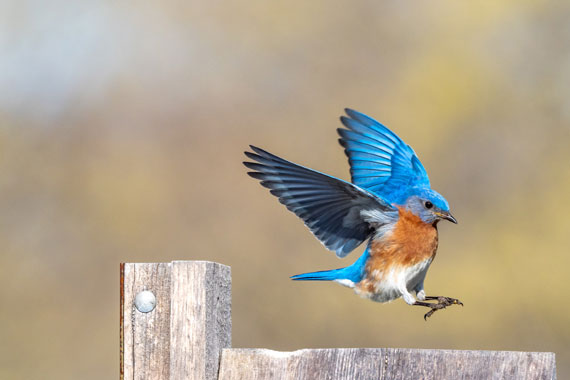Birds — with their multi-colored plumage and unique behaviors — make fascinating subjects to photograph. That said, they can be tricky to capture, particularly when in flight or even alert on land. Award-winning photographers Tony & Chelsea Northrup have some handy tips to share. Whether you’re just starting out or a pro, they can help you level up your craft.
Beginner Backyard Bird Photography Tips
Are you wondering how to get into bird photography? The good news is that you may not even need to leave your backyard to get started.
Chelsea recommends you:
- Plant native plants, hang bird feeders, and install a bird bath in your garden to attract birds.
- Always keep your camera on hand and set up to shoot.
- Share your pictures on social media and photography sites to build your confidence.
- Spend time with the birds that visit your garden to get them acclimatized to you.
- Don’t make direct eye contact with birds, as they see this behavior as predatory.
Ideal Beginner Cameras, Lenses, and Equipment:
A higher-resolution camera and telephoto lens are ideal for bird photography. To start, a beginner DSLR and 70-300mm, 100-400mm, or 70-200mm lens should suffice.
Advanced Bird Photography Tips
Once you’ve gotten good at photographing birds on your property, it’s time to challenge yourself. Upgrading your photography equipment, trying some new techniques, and heading outdoors are a must.
Tony advises you:
- Visit popular birding locations such as national parks to photograph a wider range of birds.
- Find and get to know your favorite destinations, including the weather, lighting, and seasonal changes there.
- Choose clear days when the sun is lower (sunrise or mid-afternoon), as these are the best times to shoot.
- Challenge yourself by taking action shots of birds in motion or flying at higher shutter speeds (1/1000-1/3000).
- Leverage advanced camera settings and photography techniques like manual mode, shutter speed priority, and panning.

Photo captured by Patrice Bouchard; 420mm, ISO 800, f/7.1, 1/2500s.
Ideal Advanced Cameras, Lenses, and Equipment:
For advanced bird photography, superior photography equipment is a must. Upgrade your photography equipment to an APS-C or high-res DSLR and 150/200-600mm or 150-500mm lens.
Professional Bird Photography Tips
Pro nature, wildlife, and bird photography enthusiasts take their craft seriously. As such, using the best photography equipment and perfecting their technique are their main priorities.
Chelsea advises that you:
- Learn the unique bird behaviors of the birds you wish to photograph (eating, flying, sleeping, feeding, and nesting patterns).
- Invest in regional bird books to find out more about subjects to photograph and their behavior.
- Get up early to ensure you’re the early bird that catches the worm (or the best image).
- Start submitting photography to stock sites and show and sell prints to earn money.
- Use apps to track weather, tides, precipitation, daylight hours, and more.
- Level up your images by learning and using post-production editing software.
- Photograph as many different subjects in as many conditions as possible to advance your skills.
- Vary your shutter speed to capture motion (>1/500) and faster (<1/3000) or slower (>1/1500) flying birds.
- Play with time-lapse, stacking, and other pro techniques to compose unique images.
Ideal Professional Cameras, Lenses, and Equipment:
Use a powerful 500/600/800mm f4 or f5.6 telephoto lens and >36- or < 24-megapixel teleconverter. To save money, you can buy older or second-hand models. Additional support gear, such as a tripod with a gimbal, is also recommended.
To Conclude:
Beginner and pro photographers approach photography differently. Whether you’re just starting out photographing birds or are more experienced, there’s always more you can do to improve. Follow the tips in Chelsea and Tony’s insightful vlog to up your bird photography game.
Like This Article?
Don't Miss The Next One!
Join over 100,000 photographers of all experience levels who receive our free photography tips and articles to stay current:




